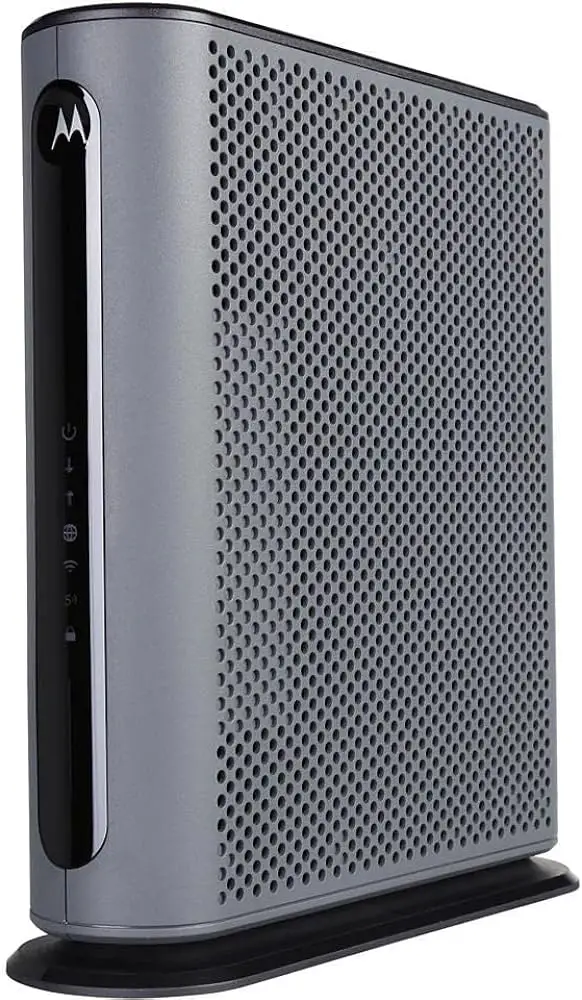To change to the 2.4Ghz Wifi spectrum, access your router settings and select the 2.4Ghz frequency band. Opting for the 2.4Ghz Wifi spectrum can be beneficial, especially in areas with many obstructions or devices competing for signal.
The 2. 4Ghz frequency has a longer range and better penetration through walls, making it ideal for larger spaces or areas with many obstacles. By changing to the 2. 4Ghz band, you can potentially improve your Wifi signal’s reach and reliability, leading to a better internet experience.
Whether you’re facing connection issues or simply want to optimize your network, transitioning to the 2. 4Ghz Wifi spectrum can offer a viable solution for enhanced connectivity.

Credit: www.ekahau.com
Understanding Wifi Spectrums
Understanding Wifi Spectrums is crucial for optimizing your wireless connectivity. WiFi operates on different frequencies, with the 2.4GHz and 5GHz spectrums being the most common. Each frequency has its own benefits and limitations. This article will provide insight into the different types of WiFi frequencies, the advantages and drawbacks of the 2.4GHz and 5GHz spectrums, and how to identify and change your current WiFi spectrum.
Different Types Of Wifi Frequencies
WiFi operates on two primary radio frequencies: 2.4GHz and 5GHz. These frequencies are used to transmit wireless signals and each has its own unique characteristics.
The Benefits And Limitations Of 2.4ghz And 5ghz
The 2.4GHz spectrum provides a wider coverage area and better penetration through walls and obstacles, making it suitable for larger homes or offices. However, due to its widespread use, it is more susceptible to interference from other devices such as microwaves and cordless phones. On the other hand, the 5GHz spectrum offers faster data transmission speeds and is less prone to interference, making it ideal for crowded urban areas with multiple WiFi networks. However, the 5GHz spectrum has a shorter range compared to 2.4GHz, making it less suitable for larger spaces.
Identifying Your Current Wifi Spectrum
To identify your current WiFi spectrum, you can access your router’s settings through a web browser. Navigate to the wireless settings section where you will find the option to change the WiFi frequency band. If your router supports both 2.4GHz and 5GHz, you can choose the one that best suits your needs.
Transition To 2.4ghz Band
Transitioning to the 2.4GHz band can significantly improve your wireless network’s performance and stability. It’s a common choice for many users due to its wider device compatibility and better penetration through walls and objects. Before making the switch, understanding the reasons for the transition and preparing your devices is crucial for a seamless experience.
Reasons For Switching To 2.4ghz
There are several compelling reasons why switching to the 2.4GHz band can benefit your wireless network:
- Better compatibility: 2.4GHz is more widely supported by various devices, making it a preferred choice for older hardware and smart home devices.
- Improved range: The 2.4GHz frequency has better coverage in areas with obstacles such as walls or floors, making it ideal for larger homes or offices.
- Reduced interference: In crowded WiFi environments, the 2.4GHz band is often less congested than the 5GHz band, leading to fewer interference issues.
- Longer wavelength: The longer wavelength of 2.4GHz allows it to travel further and penetrate solid objects more effectively, enhancing the signal’s reach.
Preparing Your Device For The Transition
Before making the switch to the 2.4GHz band, ensure your devices are adequately prepared to avoid any connectivity issues:
- Check device compatibility: Verify that all devices you intend to connect to the 2.4GHz network support this frequency.
- Adjust router settings: Access your router’s settings and configure it to broadcast on the 2.4GHz band. Each router’s interface may vary, so consult the user manual or manufacturer’s website for specific instructions.
- Update device firmware: Ensure that the firmware for your devices, including smart home gadgets and WiFi extenders, is up to date to support the 2.4GHz frequency effectively.
How To Change To 2.4ghz Spectrum
To change to the 2.4GHz spectrum, you can access your router configuration page, find the wireless network settings, and select 2.4GHz from the frequency options. This process can be done easily and quickly, allowing you to optimize your network performance for better connectivity. Below, we will guide you through the steps to achieve this seamlessly.
Accessing Your Router Configuration Page
Accessing your router configuration page is the first step to changing to the 2.4GHz spectrum. To do this, open your web browser and enter your router’s IP address in the address bar. Upon entering the IP address, you will be prompted to enter the username and password for your router. Once authenticated, you will gain access to the router’s configuration page.
Finding The Wireless Network Settings
After accessing the router configuration page, navigate to the wireless settings tab. Here, you will find the wireless network settings, including the frequency options available for your network. You can find the 2.4GHz frequency option listed alongside the 5GHz and other available frequencies.
Selecting 2.4ghz From The Frequency Options
To change to the 2.4GHz spectrum, simply select the 2.4GHz frequency option from the available frequencies. This selection will ensure that your devices connect to the 2.4GHz spectrum, allowing for improved coverage and compatibility, especially for older devices that may not support the 5GHz frequency.
Boost Your Connectivity Responsibly
Boost Your Connectivity Responsibly
Ensuring Optimal Router Placement For 2.4ghz
The 2.4GHz spectrum provides wider coverage but at slower speeds, so it’s crucial to strategically place your router for optimal performance. Position the router in a central location within your home to minimize interference from walls and other obstructions. Elevating the router and keeping it away from metal objects can also improve coverage. Utilizing a Wi-Fi analyzer tool to determine the most suitable placement is advisable.
Balancing Device Distribution Across Spectrums
Ensure equitable distribution of devices between the 2.4GHz and 5GHz spectrums based on their specific needs. Devices that require constant stable connections, like smart home appliances and older devices, are best suited for the 2.4GHz spectrum, while newer, high-bandwidth devices benefit from the 5GHz spectrum. Balanced distribution ensures efficient network utilization and prevents overcrowding on a single spectrum.
Maintaining Network Security During And After The Switch
When transitioning to the 2.4GHz spectrum, it’s essential to ensure that the network security settings are up to date and compatible with the selected spectrum. Consider reconfiguring security settings and setting up a robust Wi-Fi password to prevent unauthorized access. Regularly updating firmware and monitoring network activity is crucial to maintaining security. After the switch, validate that all devices connect securely to the adjusted spectrum.
Optimizing 2.4ghz Performance
When optimizing your 2.4GHz WiFi performance, it’s essential to consider factors such as interference reduction, speed improvement, and consistent performance. Here are some key steps you can take to enhance your 2.4GHz WiFi experience.
Channel Selection For Reduced Interference
Selecting the right WiFi channel can significantly reduce interference and improve the overall performance of your 2.4GHz network. Many WiFi routers can automatically select the least congested channel, but you can also manually choose a channel to minimize interference from neighboring networks.
Adjusting Bandwidth Settings To Improve Speed
To improve speed and stability, adjusting the bandwidth settings of your 2.4GHz WiFi network can be beneficial. By optimizing the channel width to a specific setting (20MHz or 40MHz), you can potentially enhance your network’s performance, especially in areas with high interference.
Regularly Updating Firmware For Consistent Performance
Firmware updates for your WiFi router can provide crucial bug fixes, security enhancements, and overall performance improvements. Regularly checking for and installing firmware updates can help ensure that your 2.4GHz network maintains consistent and reliable performance over time.
Tailoring For Device Compatibility
When it comes to optimizing your Wi-Fi network for 2.4GHz spectrum, it’s crucial to tailor settings for device compatibility. This involves identifying and troubleshooting specific issues with individual devices and adjusting settings to cater to older or Internet of Things (IoT) devices.
Identifying And Troubleshooting Device-specific Issues
Identifying and resolving issues related to specific devices on the 2.4GHz Wi-Fi spectrum is essential for a seamless connectivity experience. Be sure to prioritize devices experiencing connectivity problems and thoroughly investigate any inconsistencies in signal strength and network stability. It may be necessary to update firmware or drivers to ensure compatibility with the 2.4GHz spectrum.
Adjusting Settings For Older Or Iot Devices
Older devices and IoT gadgets might struggle to perform optimally on the 2.4GHz spectrum. To mitigate this, consider adjusting settings such as the channel width, encryption method, and transmission power to better accommodate these devices. Furthermore, using a Wi-Fi extender or access point can help distribute the signal effectively, especially for devices located in areas with poor coverage.
Final Tweaks For Enhanced Connectivity
The final tweaks for enhanced connectivity are crucial for maximizing the potential of your 2.4GHz WiFi spectrum. After making the change, it is essential to perform a thorough analysis of network performance and explore advanced settings to further boost the signal strength. Understanding when professional assistance might be necessary in the optimization process is also critical to ensure seamless connectivity.
Analyzing Network Performance Post-change
After switching to the 2.4GHz WiFi spectrum, it’s imperative to monitor and evaluate the network performance to identify any areas for improvement. Assess the signal strength, data transfer speeds, and overall stability of the network. Use network diagnostic tools to detect any interference or congestion that may be affecting the connectivity.
Advanced Settings To Further Boost 2.4ghz Signal Strength
Explore the advanced settings of your WiFi router to fine-tune and optimize the signal strength on the 2.4GHz spectrum. Adjust the transmission power settings to maximize coverage and penetration. Optimize the channel selection to minimize interference from neighboring networks. Consider upgrading to a high-gain antenna to enhance the signal range and performance.
When To Consider Professional Assistance For Optimization
If despite the adjustments made, issues with connectivity and network performance persist, it may be time to seek professional assistance for optimization. Certified network specialists can conduct thorough site surveys to identify environmental factors affecting the signal. They can also provide expert advice on hardware upgrades and configuration optimizations tailored to your specific network requirements.
Frequently Asked Questions Of How To Change To 2.4ghz Wifi Spectrum
How To Change The Wifi Spectrum To 2.4ghz?
To change the WiFi spectrum to 2. 4Ghz, access your router’s settings, locate the wireless settings, and choose the 2. 4Ghz frequency band from the options provided. Save the changes, and your WiFi will now operate on the 2. 4Ghz spectrum.
Why Should I Switch To The 2.4ghz Wifi Spectrum?
Switching to the 2. 4Ghz WiFi spectrum can provide better coverage, especially through walls and floors, and is suitable for devices that are not close to the router. It can also reduce interference from other devices using the 5Ghz spectrum.
What Are The Benefits Of Using The 2.4ghz Wifi Spectrum?
The 2. 4Ghz spectrum offers better coverage over longer distances, making it ideal for larger homes or offices. It also provides better penetration through walls and solid objects, ensuring a more stable connection throughout your space.
Conclusion
Switching to the 2. 4GHz WiFi spectrum can improve your network performance. By following the steps outlined in this post, you can make the transition smoothly and efficiently. Embracing this change can lead to faster and more reliable internet connectivity for your devices.
Upgrade to 2. 4GHz and enjoy enhanced WiFi experience!

